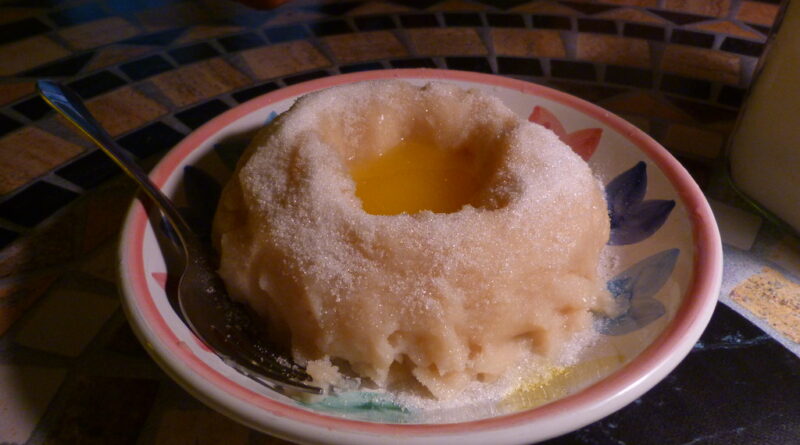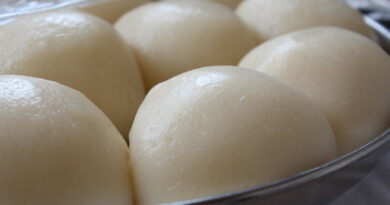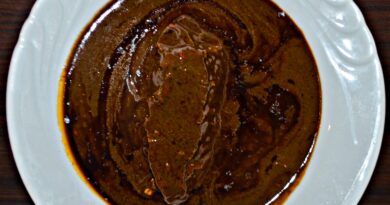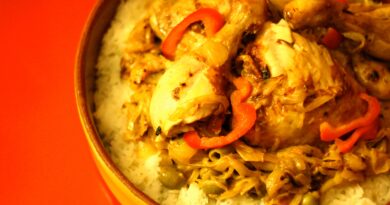Asida
Asida: A Journey Through History, Culture, and Culinary Delight
Asida is a dish that has transcended borders and centuries, weaving itself into the fabric of various cultures across North Africa and the Middle East. Its simplicity, yet profound cultural significance, makes it a fascinating culinary artifact. Often described as a type of sweet or savory dough pudding, Asida’s rich history and widespread influence is a story worth telling.
In this blog, we’ll take a deep dive into Asida: its origins, variations across different regions, its role in traditional practices, and, of course, how to prepare this delicious and versatile dish.
Origins of Asida: A Culinary Time Traveler
The roots of Asida stretch back thousands of years, making it one of the oldest continuously prepared dishes in human history. Some historians believe that the dish traces its origins to ancient Egypt or Mesopotamia, with mentions of a similar dish found in medieval Arabic cookbooks dating back to the 10th century.
Historically, Asida was made as a symbol of generosity, hospitality, and celebration. Its minimal ingredient list—mainly flour, water, and butter or ghee—reflects the accessibility of the dish, making it a common food among both the wealthy and the poor.
Over time, Asida spread across North Africa, the Arabian Peninsula, and into parts of sub-Saharan Africa, morphing into various versions as it assimilated local ingredients, flavors, and customs.
Cultural Significance: A Dish Steeped in Tradition
Asida holds a revered place in the cultural and religious practices of the regions where it is popular. Across North Africa and the Arabian Peninsula, Asida is closely associated with life’s significant moments, including weddings, births, and religious celebrations like Ramadan and Eid.
Asida in Religious Celebrations
In many Muslim-majority countries, Asida is prepared during religious festivals such as Eid al-Fitr and Eid al-Adha. It is often served at the break of fast during Ramadan, providing a filling and nutritious meal after a day of fasting. The dish’s smooth, easily digestible texture makes it an ideal choice for people who are gradually transitioning back to regular eating after the fast.
The dish is also prepared in other religious contexts, such as the Mawlid—the celebration of the Prophet Muhammad’s birthday—where Asida symbolizes community and togetherness.
Asida in Family and Social Settings
Asida is also commonly prepared during family gatherings, especially when welcoming a new baby. In Libya, for instance, Asida is served to guests during the celebration of “Sboha,” which is akin to a baby’s naming ceremony. Guests are given bowls of warm Asida drizzled with honey or served with spicy sauces to enjoy while celebrating the new addition to the family.
In Sudan and Ethiopia, the dish is traditionally prepared by women to honor family milestones or social occasions, fostering a sense of unity and togetherness. The communal experience of eating Asida—usually shared directly from a large plate—highlights its role in binding families and communities.
Regional Variations of Asida: One Dish, Many Faces
Though the basic recipe for Asida remains the same, its preparation and presentation vary widely depending on the region.
Asida in Libya
In Libya, Asida is prepared in a smooth, thick consistency and often served with honey or date syrup. The dish is traditionally eaten for breakfast, especially during cold winter months when its hearty texture provides warmth and energy.
Libyan Asida is also prepared for special religious occasions and events like weddings, and it is often served with a side of milk or laban (a type of yogurt drink) for balance.
Asida in Sudan
In Sudan, Asida (sometimes spelled “Aseeda”) has a more savory touch. It is often served with “mullah,” a type of sauce made from fermented yogurt, meat, or tomato-based stew. This savory version of Asida is more of a daily dish, typically eaten for lunch or dinner in rural areas, and it is considered a staple food.
The dish is also an integral part of celebrations, especially in rural communities, where it may be served with spiced lamb or chicken stews for festive occasions like weddings or communal gatherings.
Asida in Yemen
In Yemen, Asida takes on yet another unique variation. It is usually served with a thick gravy or stew, sometimes made from meat, and garnished with spices such as cumin and coriander. Asida in Yemen tends to be more of a savory dish, with fewer sweet elements like honey or butter.
The Yemeni version often includes fenugreek, which adds a slightly bitter note to balance the rich sauces served alongside it. The dish holds special importance during Ramadan, where it is a favorite for the evening meal that breaks the fast.
Asida in Saudi Arabia and the Arabian Peninsula
In Saudi Arabia, Asida is often served with honey and butter, particularly during celebrations like Eid. In some parts of the Arabian Peninsula, variations of Asida are prepared with dates or date syrup, combining both sweet and savory elements. The dish’s texture is also slightly different, with a softer, more pudding-like consistency.
Asida in the Arabian Peninsula often reflects the Bedouin traditions of hospitality and communal dining, with large plates of Asida being served to groups of people, reinforcing social bonds.
How to Make Asida: A Simple Yet Versatile Recipe
Now that we’ve explored the historical and cultural significance of Asida, let’s get into how you can make this timeless dish yourself.
Ingredients
- 2 cups of all-purpose flour (or whole wheat flour for a more rustic version)
- 4 cups of water
- 1/2 teaspoon of salt
- 1/4 cup of butter or ghee (clarified butter)
- Honey or date syrup (optional, for a sweet version)
- Spices (such as cinnamon, cardamom, or nutmeg, if you want to add a fragrant twist)
- Meat or vegetable stew (optional, for a savory version)
Step-by-Step Instructions
- Mix the Flour and Water: In a large saucepan, heat 4 cups of water until it begins to simmer. While the water heats up, mix the flour with about 1 cup of water to create a smooth paste. Make sure to eliminate any lumps in the flour-water mixture.
- Cook the Dough: Once the water in the saucepan is hot, add a pinch of salt, and slowly pour in the flour mixture while stirring continuously. The dough will begin to thicken. Keep stirring to prevent lumps and ensure the dough is smooth.
- Add Butter or Ghee: Once the dough has thickened to the consistency of mashed potatoes, add the butter or ghee. Stir the butter into the dough, allowing it to melt and add richness to the dish.
- Form the Asida: Remove the saucepan from the heat. Use a wooden spoon (or your hands if you’re feeling traditional!) to shape the Asida into a mound or dome in the middle of the pan.
- Add Sweet or Savory Toppings:
- For a sweet version, drizzle honey, date syrup, or sugar syrup over the Asida and sprinkle with your preferred spices like cinnamon or cardamom.
- For a savory version, serve the Asida alongside a rich stew, such as a meat or vegetable-based gravy, adding a pinch of cumin or other spices for flavor.
- Serve: Asida is best served warm and traditionally eaten by hand. You can shape small balls of dough and dip them into the sauce or syrup. If you’re feeling adventurous, invite guests to share from one large plate to experience the communal dining aspect that makes Asida a unique dish.
Nutritional Benefits: The Hidden Health Gems in Asida
Asida, despite its simplicity, offers a surprising array of nutritional benefits. Its primary ingredient—flour—provides a rich source of carbohydrates, which makes the dish an excellent source of energy. The use of butter or ghee adds healthy fats, particularly when using clarified butter, which contains fat-soluble vitamins like A, D, E, and K.
When combined with ingredients like honey, date syrup, or a rich, nutrient-packed stew, Asida becomes a well-balanced dish that can provide essential vitamins and minerals.
Moreover, the dish’s versatility allows it to adapt to dietary preferences. For example, whole wheat flour can be substituted for a more fiber-rich version, and plant-based butters or oils can replace ghee for those on vegan or lactose-free diets.
Asida: A Dish for the Ages
Asida is more than just food—it’s a window into history, culture, and the timeless human need for nourishment and community. Its global journey, from ancient civilizations to modern-day celebrations, is a testament to the enduring appeal of simple, wholesome ingredients.
Whether sweetened with honey and butter or served with savory stews, Asida remains a beloved dish, symbolizing unity and tradition. In every bite, we find a piece of history and a reflection of the communal spirit that brings people together, regardless of borders or time.
So, the next time you sit down to enjoy Asida, whether it’s in a Libyan family home, a Yemeni kitchen, or even your own dining room, you’re partaking in a meal that has fed generations across continents. Through Asida, we celebrate the beauty of simplicity and the shared experience of food.



